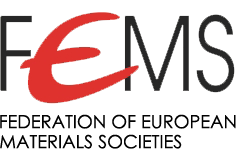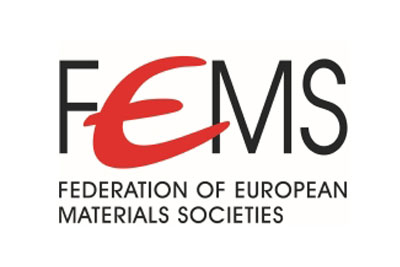Erhard Hornbogen, Professor for Materials Science
Erhard Hornbogen, who was born in Greiz (Thüringen, Germany) on 2 Feburary1930, passed away on 16 April 2020, after having reached the age of 90 early this year. He grew up and went to school in Greiz and studied metal physics as a student of Günter Wassermann at the University of Clausthal, where he worked on his PhD Thesis as a research associate from 1955 to 1957 and was the first to discover the shape memory effect in Cu-based alloys in 1956. From 1958 to 1962 Erhard Hornbogen worked as a research engineer at the Edgar C. Bain Laboratory for Fundamental Research, an Institute of the US Steel Corporation led by Lawrence S. Darken. During this period, he participated in a summer school at the University of Oxford, to learn thin foil transmission electron microscopy (TEM) in Peter Hirsch’s group. After having visited Japan for a few months, he worked from 1963 to 1965 at the Max Planck Institute for Metals Research in Stuttgart, where his Habilitation (1964) tackled the effect of lattice defects on nucleation events in solids. In fact, his period in Stuttgart allowed him to apply new TEM methods to study particle strengthened alloys. This opened the way to the understanding and the design of super alloys that until today provide the basis for the development of modern aircraft engines. He spent some time at the Norwegian Central Institute for Applied Research in Oslo, before joining Peter Haasen’s group as professor for metal physics (1965-1967) at the University of Goettingen.
Erhard Hornbogen founded the Institute for Materials at the Ruhr-University Bochum, where he was Chair for Materials Science from 1968 until 1995. The attractive research conditions at the newly founded institute allowed him to widen the spectrum of his research significantly. In fact, his studies covered a remarkable spectrum of questions that turned out to provide the basis for several fundamental developments in Materials Science. These covered a wide spectrum of fields: They include the improved understanding of mechanical properties of materials in terms of their defect microstructures and the development of the basic understanding of the atomic structure of grain boundaries in metals in the form of structural units, which still today is the basis for our understanding of the structures and properties of grain boundaries in metals. The spectrum of research activities of Erhard Hornbogen at that time extended all the way from mechanical properties and grain boundaries of metals to his early TEM work on the molecular structures of semi-crystalline polymers, including the fundamental molecular processes which govern their deformation. Indeed, it was this approach that turned out to be extremely fruitful for the modern molecular understanding of polymers. His studies not only attracted numerous internationally highly regarded colleagues but also motivated his students to develop new ideas and concepts of their own. He motivated many of them to successfully pursue academic careers and his international network allowed him to help them to join international research groups, widen their outlook and grow as scientists. As a result of this stimulating atmosphere, several of his students were later appointed to professorships at Universities in Germany and abroad and many to leading positions in industry.
In addition, he devoted a considerable fraction of his time to teaching. In fact, year by year, he taught basic classes to several hundreds of students of mechanical engineering and a few dozens of engineering and science students who specialised in materials science. He stayed at Bochum until 2010 and subsequently moved to Potsdam, because he had promised his wife Dorothea, whom he had married in Stuttgart, that they would live close to the family of their son Martin, his wife and his two children. However, even during his later years in Potsdam, he kept in close contact with his former institute and with his friends and always followed new developments with enthusiasm. In recent years he developed special interests in the evolution of microstructures. In fact, the idea that fascinated him was the concept that some of the fundamental principles of evolution of living systems and the basic principles governing the development of the microstructures of materials are closely related. Hence, he suggested that an underlying fundamental principle might exist that controls both facets of the reality and governs elementary nucleation and growth processes in biological systems as well as in engineering materials.
For more than 40 years, Bochum was his home, but he loved to travel the world and was a welcomed scientific guest at many universities and institutes. He spent prolonged research stays at the Battelle Institute (Columbus, Ohio, USA), the Ecole des Mines (Nancy, France), the Tongji University (Shanghai, China), the IBM Almaden Lab. (San Jose, USA) and at the University of Virginia (Charlottesville, USA). Erhard Hornbogen authored a number of successful text books and took a broad interest in diverse topics of materials science. As a researcher, he made important contributions to various fields, including martensitic transformations and shape memory alloys, light metals, particle strengthening, quasicrystals, effect of laser treatments on surface regions, dislocation reactions (ranging from fast shock loading to slow pairwise cutting high temperature plasticity of ordered phases), fractal analysis of microstructures, recycling, wear and much more.
Phantasy and originality were as important to him as ordering and structuring materials knowledge systematically. Erhard Hornbogen was an elected member of the North Rhine Westphalia Academy of Sciences and of the German Academy of Technical Sciences (ACATECH). He was an active member of the scientific boards of ESOMAT and ICOMAT (the European and International conference series on martensitic transformations). He was the recipient of numerous awards and honors from many major materials science communities (including the Masing Prize and the Heyn Award of the DGM, the TMS Mehl Medal, the fellowship as well as the Grossman Award of the ASM, the honorary membership of the Japanese Institute for Materials and an honorary doctorate from the University of Miskolc) and the overseas visits to receive them often gave him the opportunity to dive into other cultures (he loved the fine arts and was interested in philosophy) and to pursue his passion of mountain climbing.
Gunther Eggeler, Herbert Gleiter
Bochum, Karlsruhe, 5 May 2020

